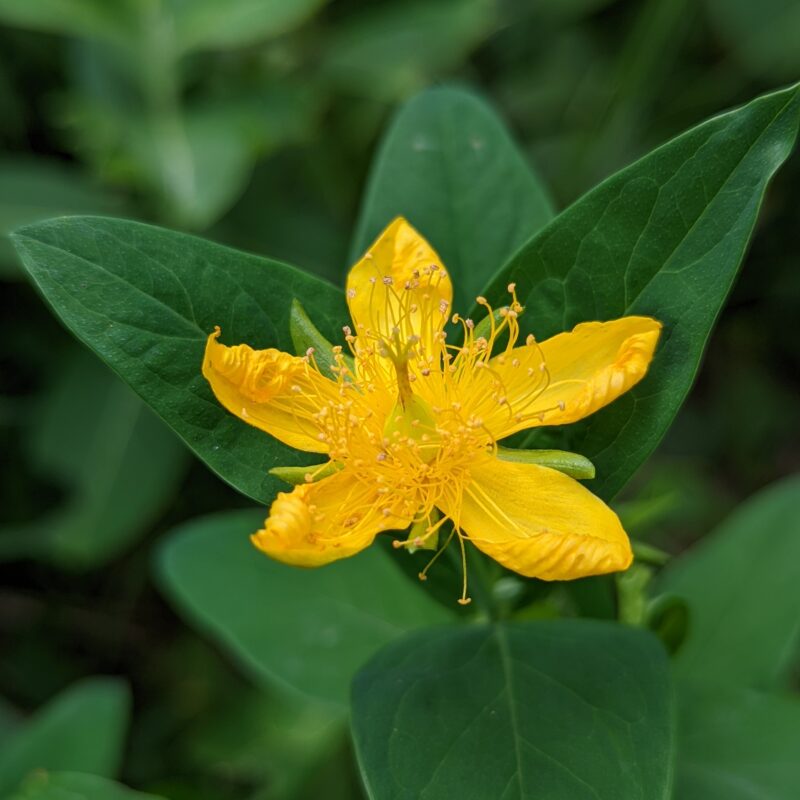Great St. JohnswortHypericum pyramidatum
Blooming for about three weeks across July and August, Great St. Johnswort is an important nutrition source for pollinators. It thrives in moist, well-drained soils and in partial to full sun. Its foliage is somewhat toxic to mammals and a skin irritant.
USDA symbol: HYAS80
General Information
| Plant Type | Forb |
|---|---|
| Height | 3 to 4 feet |
| Light Exposure | Sun |
| Soil Moisture | Dry |
| Bloom Color | Yellow |

Tolerances
| Flooding / Inundation Tolerance | Moderate |
|---|---|
| General Resilience | 6 |
| Salt Tolerance | Medium |
| Stress Tolerance | Drought Tolerant, General Disturbance |
Pollinator Value: High
| Bloom Months | July to September |
|---|---|
| Larval Host of | Moths |
| Specific Pollinators Hosted | Agonopterix lythrella, Melanchra assimilis, Nedra ramosula |
| Pollinator Benefit | Insect Pollinated, Supports Generalists |
Project Planning
| Project Type | Shoreline Buffer |
|---|---|
| Coefficient of Conservatism | 8 |
| Herbivore Sensitivity | Low |
| Lifespan | Perennial |
| Rate of Spread | Medium |
| Soil Stabilization | Deep |
| Vegetative Reproduction | Clonal |
Range
| County | Aitkin, Benton, Blue Earth, Brown, Cass, Chisago, Dakota, Dodge, Fillmore, Goodhue, Hennepin, Houston, Isanti, Itasca, Kanabec, Mille Lacs, Morrison, Mower, Olmsted, Pine, Ramsey, Renville, Rice, Sherburne, Sibley, St. Louis, Stearns, Wabasha, Washington, Winona, Wright |
|---|---|
| Ecoregion | Driftless Area, North Central Hardwood Forests, Northern Lakes and Forests, Northern Minnesota Wetlands, Western Cornbelt Plains |
| Approximate Eco Province | Eastern Broadleaf Forest, Laurentian Mixed Forest, Prairie Parkland |
